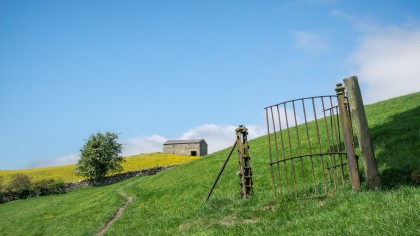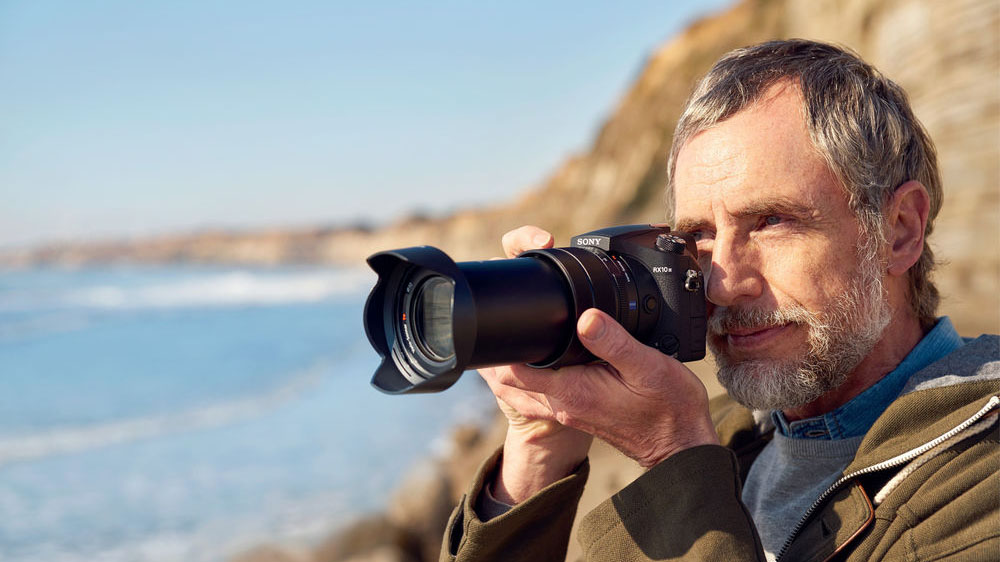Why you can trust TechRadar
Performance and image quality
- Lens is nice and sharp
- AF and be a bit sluggish in poor light
- Excellent results from the 20.1MP 1-inch sensor
Based on my experience with the RX10 II version of the camera I was expecting the new 24-600mm lens on the Sony RX10 III to impress, and I wasn't disappointed. The lens performs extremely well throughout its zoom range; details are perhaps not quite as crisp as from the RX10 II's lens, but given the far greater reach of this lens that's not surprising.
At most focal lengths the lens is remarkably sharp wide open. At its wider end I did notice softness at the far left side of the frame, suggesting possible decentering in my review camera, as the right side was tack-sharp. However, at telephoto focal lengths, the image is impressively detailed across the frame, right up to 600mm.
Sharpness increases marginally when stopping down slightly, but there's very little in it. Diffraction becomes more noticeable by f/11, although with a little more sharpening applied details are still very good. I would avoid going much above this if possible – by f/16 there's a noticeable fall-off in quality, as you'd expect.

Click here for the full-resolution image
Click here for the full-resolution image

Click here for the full-resolution image
Out of focus areas are rendered pleasingly, although f/2.4 is only available up until 35mm, with f/4 the widest aperture available above 100mm. This does mean that isolating subjects from their background can be a challenge at times, but the RX10 III still beats most of the competition in this respect. Distortion and chromatic aberration are both very well controlled throughout the range; I struggled to notice any examples of either, after photographing a range of subjects in varied conditions.
Sign up for breaking news, reviews, opinion, top tech deals, and more.
The lens is able to resolve both close and distant details, and its impressively close focusing distances of 3cm at the wide end and 72cm at the long end make it extremely versatile. Most potential purchasers of this camera are likely to shoot primarily in raw, but I was also impressed by the quality of the RX10 III's JPEGs. Colours are punchy and pleasing, with plenty of options for customization, and resolution and dynamic range are both very good.
Even at higher sensitivities I was impressed with the quality of the JPEG files. I found that using noise reduction at its lowest setting gave a good compromise between detail and noise, with files very clean and detailed up to ISO1600; the raw files do have more detail but the difference is surprisingly small. Above ISO1600, JPEG quality is still remarkably good, with very manageable noise levels, and I'd have no hesitation making A3 prints from files at ISO6400. Above this the files are certainly usable, but I wouldn't want to be making large prints.

Click here for the full-resolution image

Click here for the full-resolution image

Click here for the full-resolution image
Metering is accurate, and I was impressed with the dynamic range of the sensor, for both raw files and JPEGs, even without utilizing any of the HDR options. Auto white balance (AWB) is very accurate in sunny conditions, but tends to be a little on the cool side in shade, with a slight magenta bias; in such conditions selecting Shady gives a pleasing image, if very slightly on the warm side.
Autofocus is a bit of a mixed bag with the RX10 III. At wider focal lengths the AF is pretty snappy, working well for both still and moving subjects. At the longer end of its range, however, AF is really very slow, even with still subjects; it's accurate, once it's found its target, but the lens is prone to hunting.
Not surprisingly, this is exacerbated if you're trying to track a fast-moving subject at longer distances: my usual test, trying to focus on my dog as it ran towards me, was definitely a step too far for the RX10 III. For closer and slower-moving subjects I found I could get good results using centre lock tracking and the slow burst rate. The lack of blackout during continuous shooting is a definite bonus, and makes it far easier to follow your subject.
Click here for the full-resolution image

Click here for the full-resolution image

Click here for the full-resolution image
Sony's SteadyShot image stabilization is very effective and, with Auto ISO enabling you to set a minimum shutter speed, you can customize the settings to ensure camera shake shouldn't be an issue. It's a big camera, though, and a long lens, particularly when extended, so I found a minimum setting of 1/125 sec was a safe option at longer focal lengths; at the wider end 1/25 sec was readily achievable.
Although the RX10 III is suited more to enthusiasts, Sony has included a wide range of scene modes, creative styes and picture effects, which are fun to use and will no doubt be welcomed by some users. At the opposite end of the scale it's good to see options such the ability to use the self-timer in conjunction with bracketing, as well as many other features found on Sony's higher-end system cameras.
Video enthusiasts won't be disappointed with an excellent range of filming options, with 4K and HD modes and the ability to extract 8MP stills from 4K movies. The High Frame Rate (HFR) feature is a great option, enabling you to create slow-motion videos; and I was also very impressed with the camera's ability to handle mixed and contrasty light when shooting movies.
Verdict
The Sony RX10 III is thoroughly enjoyable to use in most situations, with a superb 24-600mm f/2.4-4 zoom lens and a bright and detailed electronic viewfinder. It's packed with features and functionality for both stills and video enthusiasts, and delivers class-leading stills and movie image quality.
It's let down somewhat by its autofocus, and some may be put off by its relatively large size and weight; however, as long as action photography isn't high on your list the RX10 III is hard to beat as an all-in-one and travel camera, albeit one that comes at a price.
